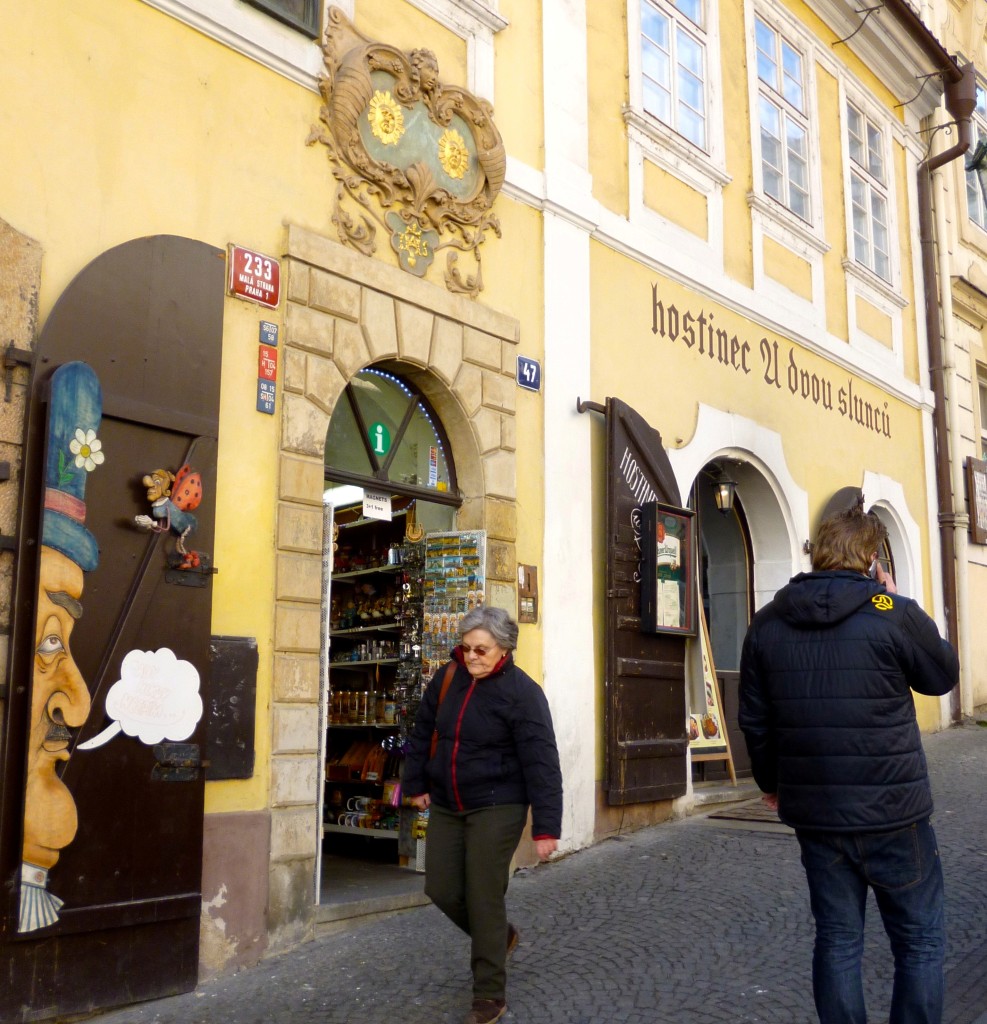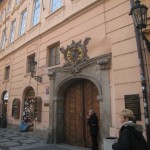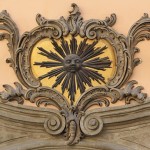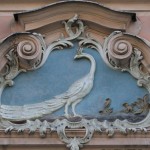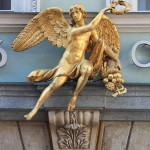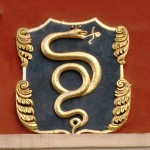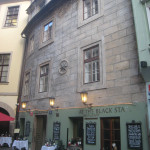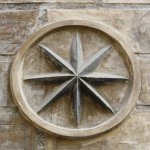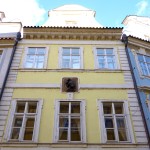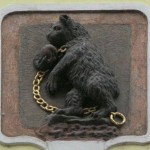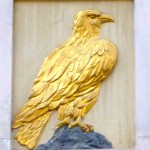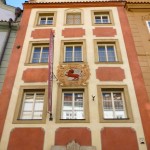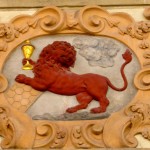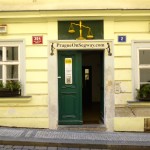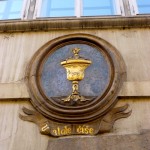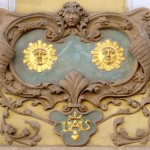Symbolism and art on the buildings of Prague
The historic center of Prague is full of architectural wonders whose artistic details reveal, through the silent language of symbols and decorations, stories of times gone by and echoes of ancient knowledge and doctrines that were skillfully painted and carved on the facades of its buildings.
In the heart of the city, consisting of small intersecting streets, and almost at every corner, there are enigmas to be solved for those who, glancing at the external facades of the buildings, abandon for an instance their logical thinking and allow their intuition and emotions to take over.
From Romanesque to Gothic, from Baroque to Art Nouveau, through Cubism, the architectural styles and changing aesthetic tastes have shaped the stones of the buildings in Prague that, whether for housing or administrative purposes, were built to withstand the unwavering pace of time.
Walking along the streets of Hradčany, Malá Strana and Staré Město, you cannot help noticing the wonderful symbols placed on the doors and facades of buildings, depicting various elements from plants to animals and the celestial world, but also images depicting human figures or simple everyday objects. Each of these peculiar and fascinating symbols tells a story or alludes to secret, chromatic and numerological correspondences in this city, Prague, for which – as for no other city in the world – people have often used the word “magical”.
In the old town centre of Prague, there are 264 buildings with symbols on their facades. Of these, the oldest date back to the thirteenth and fourteenth centuries. Traders and craftsmen were the first to use these particular decorations on buildings, some of which were also the place in which they had their workshops, when the custom of marking houses with a progressive number had not yet been adopted, but which took place in Bohemia under the reign of Maria Theresa of Austria in 1770.
Our walk to discovery a few of these small works of art starts from the ancient Royal Street, just a few steps from the Powder Tower and the Old Town Clock Square. This route, which ancient kings used to take on the day of their coronation, is full of symbols and allegories that were meant to arouse the awareness of those who undertook it.
At 29 Celetná street, leaning at the entrance of what was once a hotel, where many illustrious figures stayed, such as Mozart and then Bakunin, is the statue of a golden angel with a laurel wreath in his right hand, and a cornucopia full of fruit with a small caduceus in his left hand. The gothic style cellars of this building, which over the centuries has often changed its function and appearance, formed part in the thirteenth century of a commenda of Templar Knights and extended to adjoining Templová street. The angel, a messenger between heaven and earth, perhaps alludes to the reward given to those who do not surrender in the face of hardship in their effort towards knowledge.
Further on, proceeding to n°10 Celetná Street, on a beautiful baroque facade, is the depiction of a white peacock that gives its name to the building. White, according to alchemists, is the color of the second phase of the Great Work: “Albedo”, and the white peacock is a symbol of purity and nobility of spirit, qualities necessary to those who try hermetic operations. A few steps further to n° 8, in the direction of the Old town Clock Square, is the house “At the Black Sun”. The mysterious symbol on its facade, that depicts a sun with a completely black human face, radiating 16 ray beams of the same color, is also most probably a hermetic symbol alluding to the first phase of the Great Work: the so-called “Nigredo”. Practically adjacent to this building is another elegant facade with the symbol of a great white crowned lion on a red background. As we know, this is the emblem of Bohemia, but it is also an alchemic symbol linked to the third stage of the Great Work: the “Rubedo” characterized exactly by the color red.
Proceeding to the Old Town Clock Square, where the symbols of the buildings appeared for the first time between the thirteenth and fourteenth centuries, we stop at n° 17, where there is another interesting and strange symbol carved on the facade: a lamb with a horn on its head next to a young woman with long hair. The building, which is now called “At the White Unicorn”, once used to be called “At the stone Lamb”. The unicorn is a symbol of nobility and purity and represents the penetration of the divine into the human, but also hides a complex alchemic symbolism. According to legend, this animal would allow only young virgins to approach it, and this explains the presence of the second element in the representation. Normally, a unicorn is depicted with the body of a horse, but in medieval art it often took on the features of a goat. Hence the possible reason for the two different names of the building.
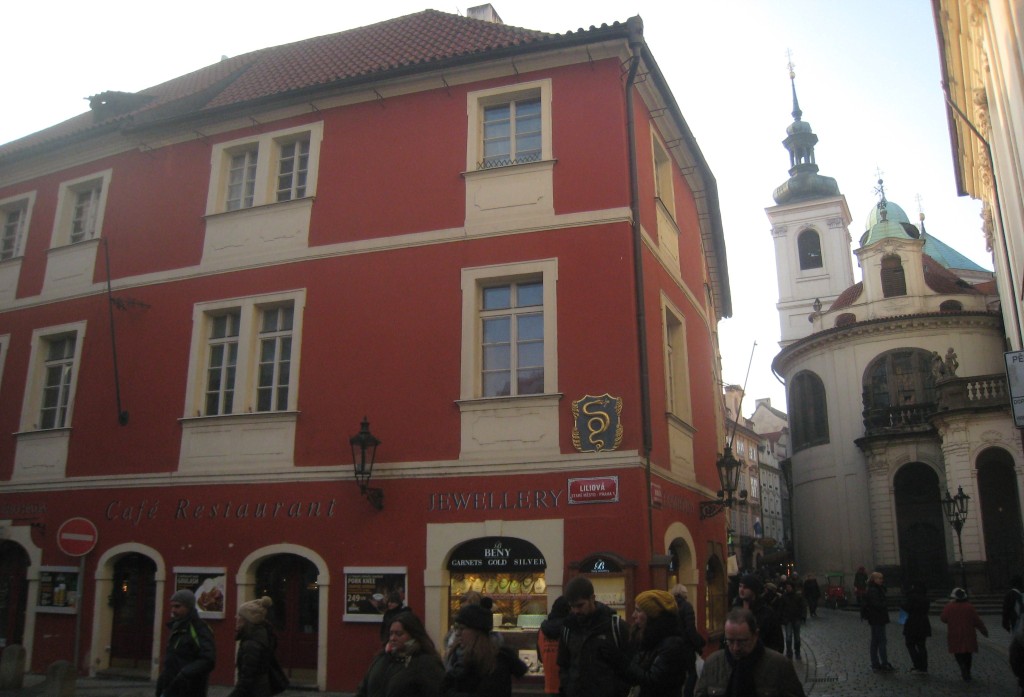 Quite close to the large square is a narrow street between the ancient buildings that connects the streets of Linhartská and Karlova. It is “Seminářská” street, where at n° 6 there is one of the most beautiful and interesting symbols among the buildings of Prague: a black star with eight points inscribed inside a circle. This symbol is the first to have been dated with certainty, and dates back to 1356. The eight-pointed black star is a symbol related to the female deities of all times and culture. From the Mesopotamian goddess Ishtar, the goddess of love and fertility, through the Egyptian Isis and the Greek Aphrodite, up to the Virgin Mary of the Catholics, this symbol actually represents the planet Venus, whose phases have an eight year cycle and is the reason for its eight points. It is not by chance, therefore, if a little further on at n°2, on the main facade of another building, there is a more modern symbol with a Madonna and child at the center of the golden star with eight points.
Quite close to the large square is a narrow street between the ancient buildings that connects the streets of Linhartská and Karlova. It is “Seminářská” street, where at n° 6 there is one of the most beautiful and interesting symbols among the buildings of Prague: a black star with eight points inscribed inside a circle. This symbol is the first to have been dated with certainty, and dates back to 1356. The eight-pointed black star is a symbol related to the female deities of all times and culture. From the Mesopotamian goddess Ishtar, the goddess of love and fertility, through the Egyptian Isis and the Greek Aphrodite, up to the Virgin Mary of the Catholics, this symbol actually represents the planet Venus, whose phases have an eight year cycle and is the reason for its eight points. It is not by chance, therefore, if a little further on at n°2, on the main facade of another building, there is a more modern symbol with a Madonna and child at the center of the golden star with eight points.
We go along to the crossing between Karlova and Liliová street, and at n°18 in Liliová street, the building on the corner – which used to be the premises of the first café of the city – there is another symbol full of meaning that is particularly fascinating and not easy to interpret. It consists of a golden snake with a crown on its head, with three points, and is about to devour (or regurgitate) a vaguely human figure. This same symbol was also adopted by the Visconti family from Milan in the thirteenth century, but it is surely more ancient. The symbol is ambivalent: it might refer to fertility (the man coming out of its mouth), or to the “astral current”, the vital force that an initiate has to learn to master.
Continuing along Karlova street, you come to the legendary stone Bridge commissioned by Charles IV to connect the Old Town to Malá Strana. With its many buildings full of symbols, even this part of the city has fascinating secrets and stories to tell, whose charm grows more and more with the passing of time.
After crossing Charles Bridge, we continue along the ancient Royal Route going from the east to the west of the city, in order to discover the most fascinating and mysterious buildings in Prague, retracing the path, physical and symbolic at the same time, that the Czech Kings had to make before being crowned on the hill of Hradčany.
We are located in Malá Strana, the most picturesque district in Prague, and the richest in history. Its baroque churches, stone streets and noble palaces displaying magnificent decorations, are precious treasures that conserve anecdotes, stories, legends and still hide many secrets to be revealed.
At number 4 of Mostecká Street, with the bridge right behind us, we come across a very interesting symbol. On the facade of an elegant building you see a black bear with a long golden chain around its neck. According to legend, the house belonged to a rich widow in love with a bear tamer, who died before they could tie the knot. She then decided to remember him by putting the symbol on the building. We mustn’t forget, however, that on the Royal Route each symbol has a hidden meaning. In alchemy the bear represents the unconscious and the primordial instincts of violence and irrationality, while black is the symbol of the “raw material” that needs to be perfected. The gold chain that holds him captive, means the power of reason and virtue capable of restraining his instincts. Overcoming your passions! This is the hidden meaning of the symbol.
A little further, at number 20, we find another intriguing emblem: three gold rings joined together that form a chain. The building was known as “The three rings” as early as 1635. According to the legend, the symbol was wanted by a father to commemorate the marriage of his three daughters who all became wives the same day. However, the three rings are also a very ancient magic symbol connected with the feminine cult of the Mother Goddess women. These are intertwined with each other, representing the cycle of life: birth, maturity and death, all ineluctably connected.
We deviate, for a moment, from the Royal Route to end up on Vlašská, the ancient “Street of the Italians” where, at number 2, we find the house “U zlaté váhy” which takes its name from the symbol on its facade: a large gold two-armed scale. This symbol dates back to the late sixteenth century. It is said that a young girl lived in this house, who was in love with one of the many Italians who lived in the neighborhood of Malá Strana at the beginning of the sixteenth century. The Italian had promised to marry her, but always postponed the wedding day for various reasons, including his long and frequent trips. The Italian never returned from one of his trips, and the woman, now older in age and mocked by everyone, went mad and decided to kill her lover on his return. She then put the symbol of scales on her door, the traditional emblem of justice, indicating the legitimate punishment that awaited him.
We retrace our steps and enter Nerudova Street, surely the most famous in Prague, leading up to the castle with its historical buildings, rich in symbols.
At number 6 of this street, a small baroque building shows a drawing of a red eagle with outstretched wings, and feet resting on a promontory of the same colour. The eagle has a very complex and varied symbolism, but the red one in particular is a solar symbol of self-regeneration. It was believed, in fact, that once this animal got older, it had the power, through a painful process, to regenerate by burning its wings and the veil that covered its eyes from the warmth of the sun, and after immersing itself three times in a fountain, it returned to being young and vigorous.
Nearby, at number 11, the red colour and the symbol of the lamb return on the building “U Červeného Beránka”. The lamb, the symbol of innocence and gentleness par excellence, is inextricably linked to the Christian tradition and refers to the sacrifice of Christ. Red is the symbol of martyrdom needed for redemption, but also of the divine nature. We are in the final stretch of the Royal Route which represents the last part of the Great Work of alchemy, where red and gold colours dominate.
In 1705, the famous Italian-Czech architect Jan Blažej Santini Aichel bought two houses on this street, at numbers 14 and 16, respectively. The latter building is called “U zlaté číše” because of the symbol of a golden chalice which towers over the entrance. Before Santini, even the master goldsmith Jan Schumann and the Italian Baroque sculptor and plasterer Giovanni Pietro Palliardi, lived in the building. Surely the symbol of the cup on the building indicated the craft of the goldsmith of one of its owners, but the cup, as it is known, has a very rich symbolism and can be the symbol of immortality and the container of the principle of eternal life.
Having continued to climb, we reach number 26, where another eagle is found, but instead of the red one below, this one is placed on the ground with closed wings and is completely golden. Perhaps it is the conclusion of the process of regeneration and alchemical improvement which started at no. 6.
A big key and a wheel, both gold, adorn the walls of buildings at the numbers 27 and 28, while at no. 35, a winged being seems to point out something to those following the path… One wonders if it has something in common with the one at the beginning of the journey, at 29 Celetná Street…
At this height of Nerudova Street, within a few metres is a concentration of a number of interesting and enigmatic symbols. At n. 41 a magnificent red lion stretches its paw out towards a golden cup containing the elixir of life. As we said, we are almost at the end of the Work, the red lion in alchemy indicates the red matter dwelling on the bottom of the alchemical pot before the final sublimation and refinement, the third degree of the initiation connected to the fire.
However, it is not over yet, and the risk of failure in the Great Masterwork is real. The lion, in fact, has its head facing backwards as if it were looking at the other symbol on the adjacent building, at no. 43: an eerie green crustacean. It is the zodiac sign of Cancer which indicates the Summer Solstice and the gradual decrease of light. The vital force still isn’t fully under the rule of reason. It is the same animal which is present in the eighteenth Major Arcana of the Tarot deck, “the Moon”, and symbolizes the fearsome forces of the unconscious that the initiated must always keep at bay.
Our journey ends at no. 47 of Nerudova, at the house “U dvou slunců”. The building in which Jan Neruda lived, the poet after whom the street is named, is decorated with a particularly beautiful and complex symbol that indicates the end of the Royal Route and at the same time, symbolizes the realization of the Work of the alchemists. Two suns with human faces, similar but not identical, within a stone frame in which at each end are two faces looking at each other in opposite directions. Between the two faces, and above the two suns, another stone human face dominates the scene. Below, in gold letters, the writing “IHS” towers over a heart, also gold, from which the flames rise. At this point of the journey the careful reader, gifted with will, good intuition and maybe an old book of alchemy, will surely know how to decipher these fascinating symbols and the mysterious teachings they conceal.
by Mauro Ruggiero





